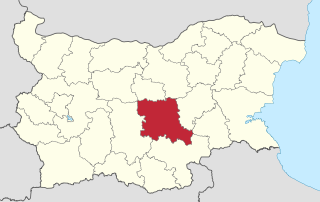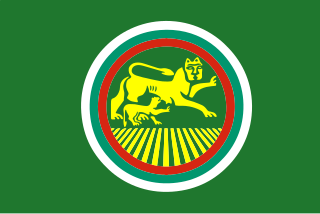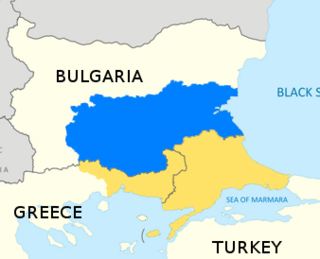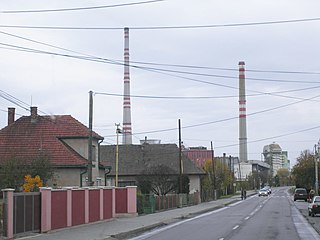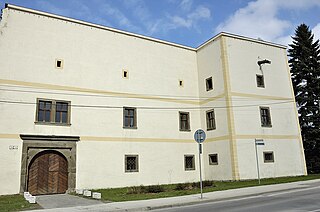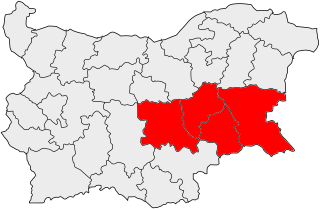Coordinates: 42°14′N026°04′E / 42.233°N 26.067°E Kovachevo (Bulgarian : Ковачево) is a village in southern Bulgaria, located in the municipality of Radnevo in the Stara Zagora Province. [1]

A geographic coordinate system is a coordinate system that enables every location on Earth to be specified by a set of numbers, letters or symbols. The coordinates are often chosen such that one of the numbers represents a vertical position and two or three of the numbers represent a horizontal position; alternatively, a geographic position may be expressed in a combined three-dimensional Cartesian vector. A common choice of coordinates is latitude, longitude and elevation. To specify a location on a plane requires a map projection.

Bulgarian, is an Indo-European language and a member of the Southern branch of the Slavic language family.

Radnevo is a town in southern Bulgaria, part of Stara Zagora Province, located in the eastern Upper Thracian Lowlands. It is the administrative centre of the homonymous Radnevo Municipality. As of December 2009, the town has a population of 13,384 inhabitants.
Kovachevo is the location of the Maritsa Iztok-2 power station. This power station was ranked as the industrial facility that is causing the highest damage costs to health and the environment in Bulgaria and the entire European Union. [2]

The Maritsa Iztok Complex is the largest energy complex in South Eastern Europe. It is located in Stara Zagora Province, south-central Bulgaria. It consists of three lignite-fired thermal power stations. The complex is located in a large lignite coal basin, which includes several mines, enrichment plants, a briquette plant and its own railway system. The development of the thermal power and mining complex at Maritsa Iztok began in 1952, but the lignite deposits used to be known well in the mid-19th century. The Maritsa Iztok mines and power plants are interdependent as the only market for coal is the power plants, while the power plants have no other supplier of coal but the mines.

A power station, also referred to as a power plant or powerhouse and sometimes generating station or generating plant, is an industrial facility for the generation of electric power. Most power stations contain one or more generators, a rotating machine that converts mechanical power into electrical power. The relative motion between a magnetic field and a conductor creates an electrical current. The energy source harnessed to turn the generator varies widely. Most power stations in the world burn fossil fuels such as coal, oil, and natural gas to generate electricity. Others use nuclear power, but there is an increasing use of cleaner renewable sources such as solar, wind, wave and hydroelectric.
Health, as defined by the World Health Organization (WHO), is "a state of complete physical, mental and social well-being and not merely the absence of disease or infirmity." This definition has been subject to controversy, as it may have limited value for implementation. Health may be defined as the ability to adapt and manage physical, mental and social challenges throughout life.
